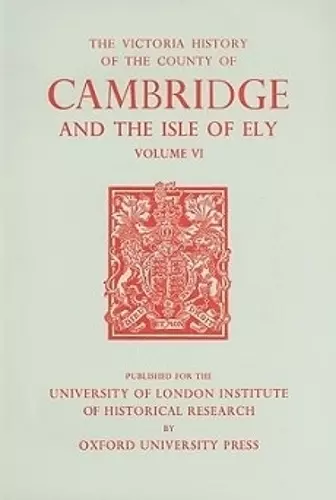A History of the County of Cambridge and the Isle of Ely
Volume VI
Format:Hardback
Publisher:Oxford University Press
Published:1st Jan '78
Currently unavailable, and unfortunately no date known when it will be back

This volume contains the histories of 24 parishes in south-east Cambridgeshire, forming the hundreds of Chilford, Radfield, and Whittlesford. Traversed, and in part bounded, by the Icknield Way and the ancient Wool Street, they stretch from the neighbourhood of Cambridge to the Suffolk border. In the valley of the Cam or Granta the arable was cultivated in open fields until the early- rgth-century inclosures. On the south-eastern upland the medieval clearance of ancient woodland in the heavy clays produced much early inclosure, while the heathland lying along the Icknield Way encouraged sheep-farming, and nearer Newmarket is used for stud-farms. Babraham was notable for 17th-century irrigated meadows, and as the home of the Victorian sheep-breeder, Jones Webb. The villages in the river valleys are mostly nucleated; in the less populous eastern part settlement has been more scattered. The former market townof Linton, near the centre of the area, had once two small religious houses, and Castle Camps a motte-and-bailey castle, held by the Veres. Among later mansions, the Tudor Babraham Hall, and Horseheath Hall, a grand classical house, destroyed through its owner's extravagance, have gone. Sawston Hall, the seat of the Catholic Huddlestons during four centuries, survives. The village of Sawston and its neighbours have grown since the 19th-century through the presence of such industries as tanning, paper-making, and the production of fertilizers, and more recently of adhesives, besides light engineering. Further east the land is still devoted mainly to farming.
ISBN: 9780197227466
Dimensions: unknown
Weight: 1740g
350 pages